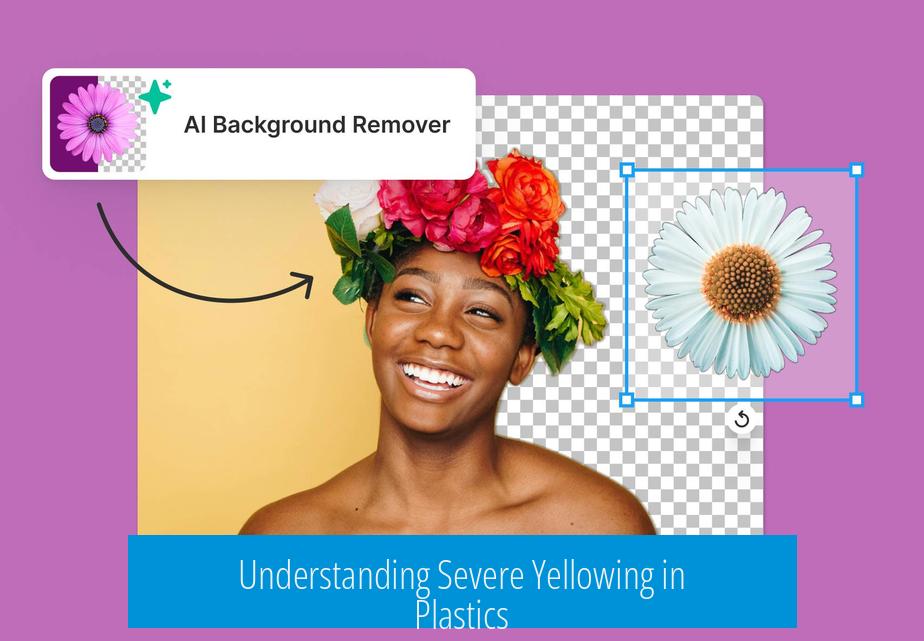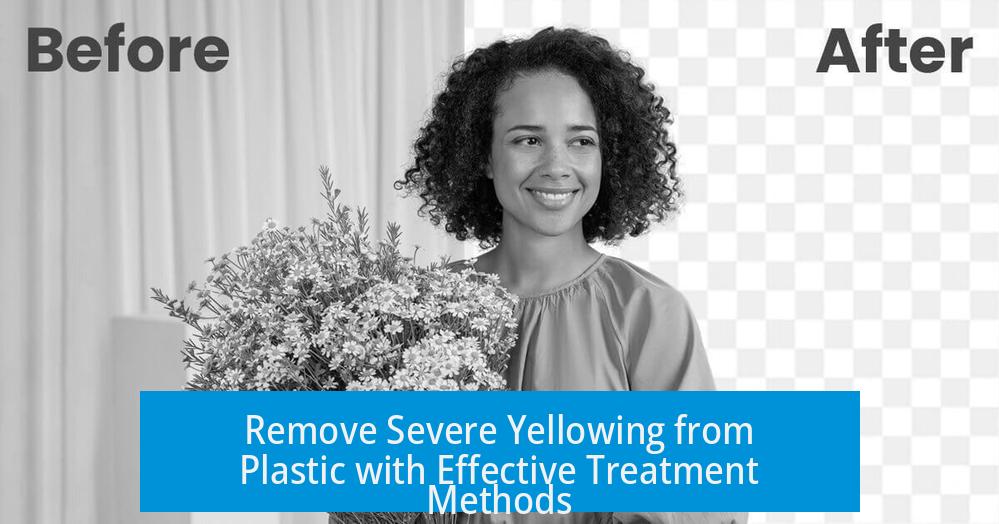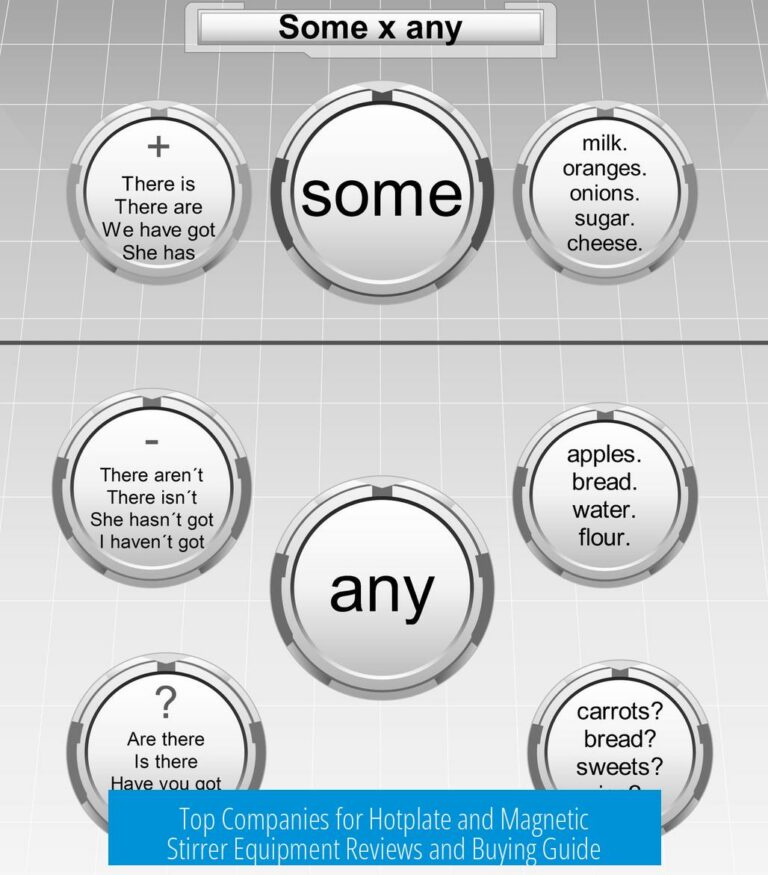Remove Severe Yellowing from Plastic
Severe yellowing of plastic results primarily from deep chemical degradation caused by prolonged exposure to UV light and oxygen. This irreversible damage affects the entire polymer matrix, making complete restoration very difficult. However, various chemical, mechanical, and thermal methods can reduce yellowing, though buying replacement plastic parts often remains the best solution.
Understanding Severe Yellowing in Plastics

Yellowing in plastics occurs through two main pathways: chemical and physical. Chemically, UV radiation and oxygen break down polymer chains, producing yellow chromophores. Physically, surface abrasion and haziness build upon the discoloration. The key point is that the yellowing often penetrates deeply, not just the surface, indicating structural degradation.
This deep discoloration means that the yellow tint is embedded in the polymer’s interior. Therefore, surface cleaning alone will not suffice. The changes to the polymer chains themselves make the yellowing effectively permanent at a molecular level, limiting potential restorative methods.
Limitations and Practical Considerations
- Severe yellowing involves chemical damage that cannot be fully reversed.
- Polymer chain damage means complete restoration is often impossible with consumer methods.
- Replacement parts, such as plastic buttons or panels, offer a more permanent and practical solution.
Attempts to “undo” yellowing might succeed partially but rarely restore the original clarity. Repair processes tend to be time-consuming, costly, or require specialized equipment.
Chemical Treatment Methods
Hydrogen Peroxide and UV Light
This method uses a high concentration of hydrogen peroxide (H2O2) combined with UV light exposure. Submerging the plastic fully in H2O2 and exposing it to UV light for 8–12 hours can reduce yellowing by breaking down chromophores. This photochemical process is similar to “retrobright” treatments used in restoring vintage plastics.
- Effectiveness varies based on the type of plastic and extent of yellowing.
- It may significantly brighten plastics that are yellowed but not degraded beyond recovery.
- Requires controlled UV exposure and safety precautions when handling peroxide.
A documented example demonstrated good results using this method, although it does not guarantee restoration for all plastic types.
Acetone and Acetone Vapor
Acetone application can affect plastic surfaces but requires caution. Direct immersion often causes damage or dissolution. Instead, using acetone vapors or lightly swiping plastic buttons with a microfiber cloth dabbed minimally with acetone may improve appearance.
- Acetone vapor can smooth and slightly lighten the surface by softening degraded layers.
- Overexposure risks dissolving or warping plastic.
- The method is anecdotal and not universally recommended due to risks.
One reported success involves cleaning car headlights with acetone vapor and minimal wiping, restoring clarity. However, the contradictory opinions on acetone’s safety mean this approach must be tested on an inconspicuous area first.
Mechanical Treatment Methods
Sanding and polishing provide a physical method to remove superficial yellowing and abrasion. Steps include:
- Wet sanding with fine grit sandpaper to remove the yellowed surface layer.
- Polishing to restore smoothness and clarity.
- Optionally, quick acetone wiping can remove residual haziness.
This method is effective if yellowing is limited to the outer surface but cannot address internal polymer discoloration. Excessive sanding may thin the plastic or alter its shape.
Thermal Treatment Methods
Controlled heating can melt the outermost plastic layer slightly, potentially reducing yellowing. Key points include:
- Heat guns or butane torches on the lowest setting can be used.
- The goal is to remelt the surface just enough for clarity without deformation.
- This method is high risk and requires careful temperature control.
Improper heat application risks warping, bubbling, or permanently damaging the plastic.
Summary of Key Approaches
| Method | Process | Effectiveness | Risks/Considerations |
|---|---|---|---|
| Hydrogen Peroxide + UV | Submerge in H2O2 and UV light for 8-12 hours | Reduces yellowing chemically; good for partial restoration | Requires safety precautions; may not work on all plastics |
| Acetone Vapor or Wiping | Expose to acetone vapor or lightly wipe with cloth | Can improve surface clarity; anecdotal evidence | Risk of dissolving plastic if overused; proceed cautiously |
| Sanding and Polishing | Wet sand and polish surface; optional acetone wiping | Removes surface yellowing and abrasion; moderate improvement | Can thin or deform plastic if overdone |
| Heat Treatment | Apply low heat to remelt surface for clarity | Possible clarity improvement | High risk of damage; requires skilled application |
| Replacement | Purchase new parts | Complete solution; permanent restoration | May be costly or hard to find replacements |
Severe yellowing is challenging to reverse due to polymer degradation. Chemical treatments, mechanical polishing, and heat can modestly improve appearance but rarely restore original clarity fully. Replacement parts remain the most reliable option for severe cases.
Key Takeaways
- Severe plastic yellowing is mostly irreversible due to chemical degradation.
- Hydrogen peroxide with UV light can partially reverse yellowing on some plastics.
- Acetone vapors and light wiping may help but require caution.
- Sanding and polishing remove surface defects but not embedded discoloration.
- Heat treatments can clear surfaces but carry risks of damage.
- Buying replacement plastic parts is often the most practical solution.
Can severe yellowing in plastic be fully reversed?
Severe yellowing usually means deep chemical damage. The discoloration often goes through the entire material, making full reversal unlikely. In many cases, the plastic cannot be restored to its original state.
How does hydrogen peroxide with UV light help remove yellowing?
Immersing plastic in hydrogen peroxide and exposing it to UV light for 8–12 hours can lighten yellowing. This method works by breaking down yellowed compounds, but success varies by plastic type.
Is acetone safe to use for removing yellowing on plastic?
Acetone can help when applied carefully with a microfiber towel in small amounts. Direct acetone immersion is risky and can worsen the plastic. Use brief, gentle swipes rather than soaking.
What role does sanding play in reducing yellowing?
Sanding with fine grit sandpaper removes surface discoloration. Follow sanding with careful acetone wiping to smooth and clear the plastic. This mechanical method targets surface yellowing.
Can heat remove yellowing from plastic without damage?
Controlled heating with a heat gun or butane torch at low settings can clear the plastic’s outer layer. This method is risky and must avoid melting or deforming the plastic.





Leave a Comment